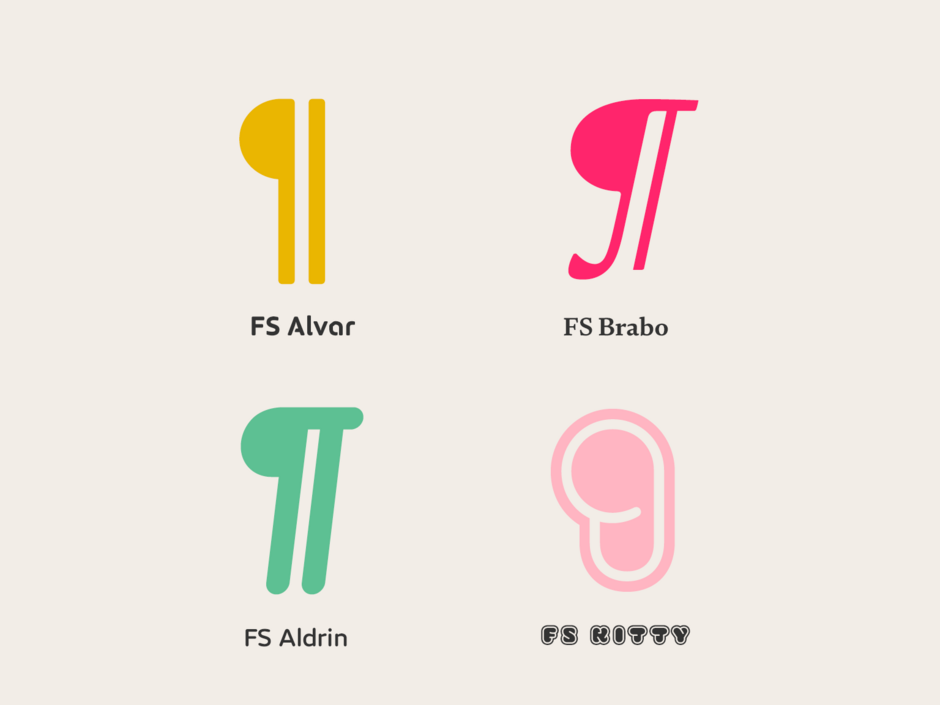Punctuation series: The pilcrow

Punctuation series: The pilcrow
Fernando Mello Knowledge share
The pilcrow or paragraph symbol is also known as the alinea or blind P. It is used to represent individual paragraphs in a piece of text. Before its invention a range of other symbols were used from a small horizontal line to a K (for kaput the Latin for ‘head’) to a ‘C’ (for capitulum meaning ‘little head’). The sign eventually evolved from a ‘C’ with a vertical line through it, to the symbol we recognise today. The word pilcrow derives from the Greek word paragraphos.
When mechanised print took over manual lettering the pilcrow would be drawn in the space before the start of a paragraph by rubricators. This is where the indent came from – the character was phased out because it took too long to draw but the space for it remained.
Designing the Pilcrow is often a special moment when creating a typeface. It usually happens at an advanced stage when you are expanding the character set and designing a sequence of fairly dull, often characterless punctuation signs. When it’s time for the pilcrow, suddenly you have a bit more of freedom to create. There’s room to create something unique, or to incorporate some ownable characteristics from the letters’ design. For this reason the pilcrow is one of the most interesting punctuation signs to design – an oasis in the middle of standardised punctuation characters and symbols. In my opinion the pilcrow is a character for the typeface designer to experiment with.
Modern day use
Although not often used to mark out every paragraph the pilcrow has several interesting modern day uses:
- In programs such as MS Word there is an option to show formatting and when turned on the pilcrow symbolises the end of a paragraph (in Word go to the home tab and click the ¶to turn them on and off).
- In legal copy the symbol is used to cite particular paragraphs in other documents like in the example below:
‘The defendant has the option to offer compensation but ¶17 of the agreement suggests it is not required.’
- In proofreading it can be used to indicate where one paragraph should be split into two.
- The pilcrow is also used in footnotes but is sixth in the sequence which starts with an asterisk and includes the dagger and double dagger.